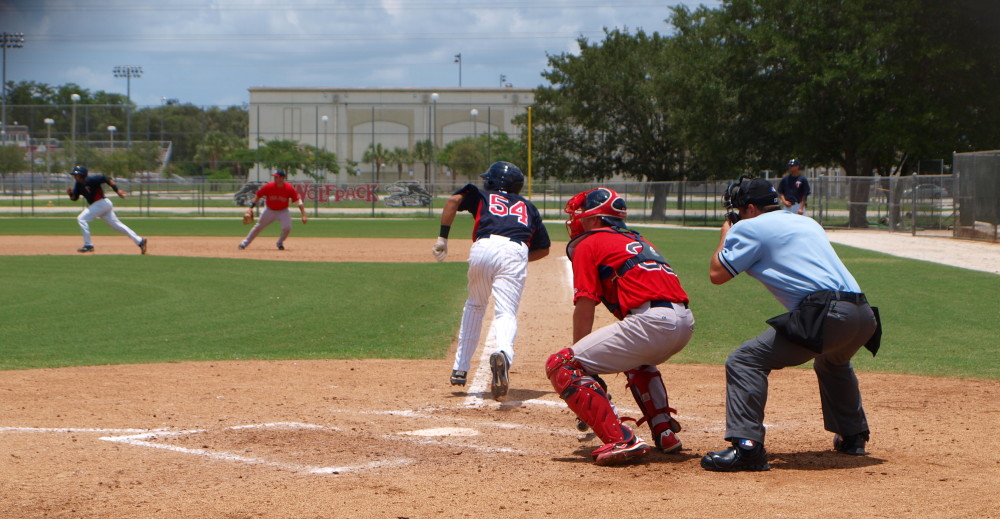Independent, Northeast League
Baseball has a long history in Elmira, New York, and many of the teams were known as the Pioneers. The team began play in 1865 as the Colonels in the New York State League, but two years later they became a charter member of the new New York-Penn League. The Pioneer name was first used in 1901. The name switched back and forth between the Colonels and Pioneers with the concurrent switching of leagues over several years. Then in 1932, the Colonels joined the St. Louis Cardinals organization and changed their name to the Red Wings. But it was back to the Pioneers for two unaffiliated seasons in 1935 and 1936. Except for a couple of short stints as something else (Royals, Suns, Red Sox) the Pioneers name seemed to stick through many years of different affiliations with the Brooklyn Dodgers, Detroit Tigers, Philadelphia Athletics, St. Louis Browns, Washington Senators, Philadelphia Phillies, Baltimore Orioles, Kansas City Royals, San Diego Padres, Cleveland Indians, Boston Red Sox, and Florida Marlins (their last major league affiliation). Who didn’t they play for?
In 1995, the owner, Clyde Smoll, moved the team to Lowell, Massachusetts, leaving Elmira without a team. An independent team, with the Northeast League, took the name of Pioneers and began play in 1996. In 2005, the Pioneers joined the Canadian-American League, but only played one more season before being “phased out” of the league. The team now using the Elmira Pioneers name is a collegiate team, which has been playing since 2006.
One problem that the Pioneers faced had been the negative outcome of an experiment. In 2002, 51 percent of the ownership was sold to a Japanese corporation who wanted to use the team to help develop Japanese players. However, the experiment was “lackluster at best.” There were few Japanese players sent to the team, and there are very few Asian people in Elmira. Therefore, fans could not identify with the players. The worst problem was that the team had to deal with foreign players’ visa issues whenever they crossed the border into Canada. So the Japanese players were often left behind when the team had to play the powerhouse Quebec team. This all helped lead to the end of professional baseball in Elmira (Diane Janowski, New York History Review).
The collegiate Pioneers still play in Dunn Field, as did the minor league team. The park was built in 1939 on the site of a former football field, Maple Avenue Driving Park, which was the site of the very first professional football night game. The park is named after Edward Joseph Dunn who donated the land for the stadium (Janowski).
We have been to the Elmira field two times: once on a trip to see the stadium after we had moved to Rochester in 1998, and once to see Jason Tuttle, a player we had kept track of for a while (see “Meeting Mr. Tuttle”). The stadium was definitely in need of some extensive work. While it was a quaint old field, it was very uncomfortable. (Not as bad as a couple other stadiums we’ve been to, but close.)
While professional baseball no longer exists in Elmira, there is still baseball and sometimes the collegiate teams put on a better show than any professional team. We encourage you to check out some of these teams. They’re the future of baseball.
History adapted from Fun While It Lasted.net, except where noted.
